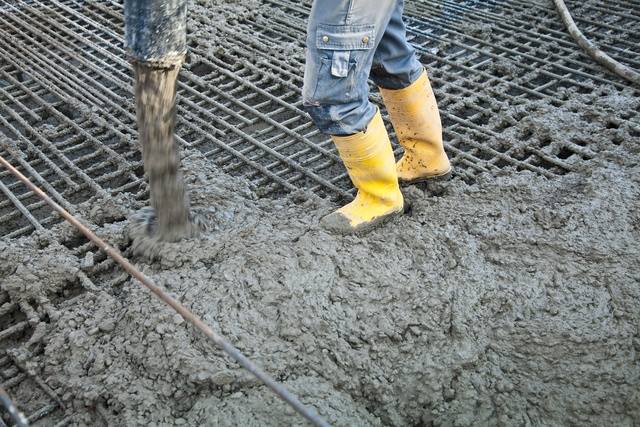Concrete repair is the process of restoring damaged or deteriorated concrete to its original strength and appearance. As one of the most durable materials used in construction, concrete is subject to wear and tear over time due to factors like environmental exposure, heavy loads, and poor maintenance practices. Understanding the nuances of concrete repair ensures not only the safety of structures but also their aesthetic appeal and longevity.
Importance of Concrete Repair Maintaining the integrity of concrete surfaces is critical for several reasons. It prevents further damage, reduces safety hazards, and increases the lifespan of buildings, bridges, and other structures. Early intervention in concrete repair can save significant costs and effort in the long run.
Common Causes of Concrete Damage Concrete damage can occur due to:
- Weather Conditions: Freeze-thaw cycles, rain, and UV exposure weaken the material.
- Structural Stress: Heavy loads and vibrations lead to cracks and fractures.
- Chemical Exposure: De-icing salts, acid rain, and industrial chemicals corrode the surface.
Signs Your Concrete Needs Repair
Concrete damage isn’t always obvious. Recognizing early signs can help prevent severe issues:
- Cracks and Fractures: Small cracks might seem harmless but can expand over time.
- Discoloration and Stains: Dark spots or efflorescence indicate water damage or chemical reactions.
- Uneven Surfaces and Sinking: These can be a result of soil erosion or poor foundational support.
Types of Concrete Damage
Concrete issues vary in nature and severity. Understanding these differences helps in planning effective repairs:
- Structural Damage: These are severe and compromise the safety of a structure, such as deep cracks.
- Non-Structural Damage: Superficial issues like surface discoloration or minor chips.
- Water Damage: Signs include spalling (flaking) and mold growth.
- Impact Damage: Caused by heavy objects or vehicles, resulting in surface dents and cracks.
Tools and Materials for Concrete Repair
Successful repairs depend on having the right tools and materials:
- Tools: Chisels, trowels, power washers, and grinders.
- Materials: Specialized concrete mixes, sealants, and epoxy injections for crack filling.
- Bonding Agents: Ensure strong adhesion between old and new concrete.
Step-by-Step Process for Concrete Repair
Follow these steps for effective concrete repair:
- Cleaning and Preparing: Remove debris and dirt from the damaged area using a power washer.
- Filling Cracks and Holes: Use a patching compound or epoxy resin.
- Finishing Touches: Smooth the surface with a trowel and apply sealant for protection.
Preventative Measures for Concrete Longevity
Prevention is better than cure. Extend your concrete’s lifespan by:
- Regular Maintenance: Cleaning and sealing surfaces periodically.
- Avoiding Overloading: Distribute heavy loads evenly to prevent cracks.
- Protecting from Weather: Use waterproof coatings in areas prone to rain and freeze-thaw cycles.
DIY vs. Professional Concrete Repair
Knowing when to DIY or call a professional is key:
- DIY: Ideal for small cracks or cosmetic repairs.
- Professional Help: Necessary for structural issues and large-scale repairs.
- Cost Comparison: DIY is cheaper, but mistakes can lead to higher long-term costs.
The Role of Technology in Concrete Repair
Advancements in technology have revolutionized concrete repair:
- Innovative Tools: Laser scanners to detect damage.
- Techniques: Self-healing concrete and robotic applications.
- Benefits: Improved accuracy and reduced repair time.
Environmental Impact of Concrete Repair
Concrete repair can be eco-friendly with sustainable practices:
- Recycling Materials: Use reclaimed concrete in repairs.
- Low-Emission Products: Opt for green-certified sealants and coatings.
- Carbon Reduction: Techniques like geopolymer concrete lower the carbon footprint.
Concrete Costs
Understand the financial aspects:
- Factors Influencing Costs: Size of damage, materials, and labor.
- Cost-Saving Tips: Regular maintenance and DIY minor fixes.
- Budgeting: Plan and allocate funds for potential repairs.
Common Mistakes in Concrete
Avoid these pitfalls for successful repairs:
- Ignoring the Root Cause: Without addressing underlying issues, damage can reoccur.
- Using Improper Materials: Mismatched materials weaken the repair.
- Skipping Preparation Steps: Proper cleaning and bonding are essential.
Frequently Asked Questions (FAQs)
1. How do I know if my concrete needs repair?
Look for visible cracks, discoloration, or uneven surfaces.
2. Can I repair concrete myself?
Yes, for minor repairs. Structural issues require professional help.
3. What materials do I need for concrete repair?
Common materials include patching compounds, epoxy resins, and bonding agents.
4. How long does concrete repair last?
Well-executed repairs can last decades with proper maintenance.
5. Is concrete repair environmentally friendly?
Yes, using sustainable materials and practices minimizes environmental impact.
6. What is the cost of professional concrete repair?
It varies but typically ranges from $5 to $25 per square foot, depending on the complexity.
